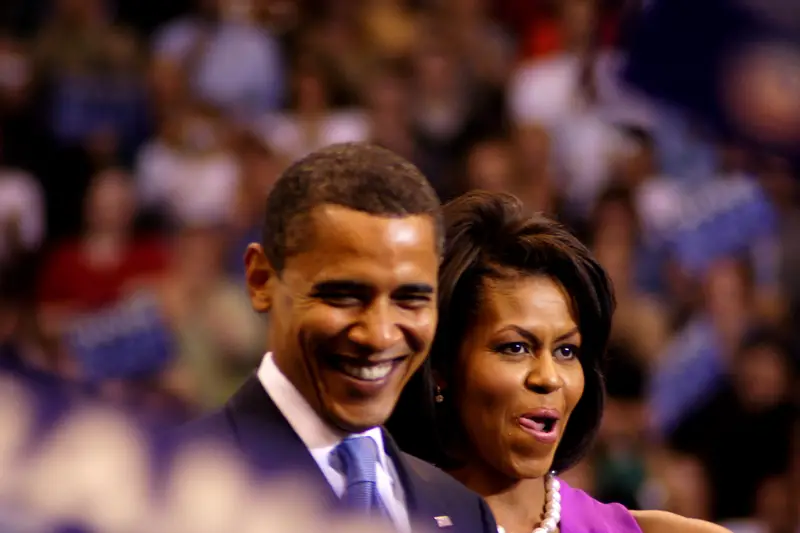After leaving office in 2017, former President Barack Obama has been candid about the toll his presidency took on his marriage to Michelle Obama. During a recent conversation with Hamilton College President Steven Tepper on April 5, Obama admitted he accumulated a “deep deficit” with his wife during his eight years in office.
“I have been trying to dig myself out of that hole by doing occasionally fun things,” the former president shared, highlighting the ongoing work required to maintain their 32-year marriage.
The Obamas, who wed in 1992, faced unique challenges as they balanced raising their daughters, Malia and Sasha, with the intense demands of running the country. When Barack Obama won the 2008 election and moved his family to the White House, their daughters were just 10 and seven years old.
Michelle Obama has been equally forthright about difficult periods in their relationship. During a previous interview with Revolt TV, she revealed, “People think I’m being catty by saying this — it’s like, there were 10 years where I couldn’t stand my husband. And guess when it happened? When those kids were little.”
This rare transparency about marital struggles from a former first couple has resonated with many Americans who face their own relationship challenges. The Obamas have consistently emphasized that marriage requires continuous effort, especially during periods of significant stress or imbalance.
Michelle Obama has previously discussed how their relationship wasn’t always “even” as she shouldered more of the childcare responsibilities while Barack pursued his political ambitions. Despite these imbalances, both have emphasized the importance of commitment through challenging times.
In a 2024 appearance on “The Pivot Podcast,” Barack Obama credited his wife for helping him withstand the pressures of his presidency. He acknowledged that she was an extraordinary woman and an amazing partner who helped him stay focused. The former president added that the thought of disappointing his children was something he couldn’t bear to consider.
The couple’s openness about their relationship struggles comes amid persistent unfounded rumors about potential marital problems. However, they have consistently demonstrated their commitment to each other through public displays of affection and mutual respect.
This past Valentine’s Day, Barack Obama shared a heartwarming selfie with Michelle on social media with the caption: “Thirty-two years together and you still take my breath away. Happy Valentine’s Day, @MichelleObama!”
Sources close to the couple have indicated that the Obamas don’t try to present their relationship as “magical” but rather as a real partnership that requires work. Michelle has reportedly expressed little interest in attending Washington D.C. events with Barack, preferring to focus on their post-White House life and personal projects.
The Obamas have built a post-presidential life that includes various projects through their Obama Foundation and the development of the Obama Presidential Center in Chicago. They remained in Washington D.C. until their younger daughter Sasha completed high school, with Malia later attending Harvard University.
Barack Obama’s acknowledgment of his “deficit” and efforts to rectify the situation reflect the couple’s commitment to continuous growth and adaptation in their relationship. For many Americans, the Obamas’ willingness to discuss relationship challenges humanizes a couple that often appeared picture-perfect during their White House years.
Michelle Obama has previously shared that the couple sought marriage counseling to work through difficult periods, further normalizing the idea that even strong marriages benefit from professional support during challenging times.
As the Obamas navigate their fourth decade together, their relationship continues to evolve. Their willingness to publicly acknowledge the difficulties they’ve faced while maintaining their commitment to each other offers a realistic portrait of long-term partnership—one that resonates with many Americans navigating their own relationship journeys.
The former first couple’s transparency about their marriage stands in contrast to the often idealized public images presented by political figures. By acknowledging that even presidential love stories come with significant challenges, the Obamas have contributed to a more authentic conversation about the work required to sustain long-term relationships.
As they move further from their White House years, the Obamas continue to balance their individual pursuits with their shared commitment to each other and their family, demonstrating that marriage—like hope and change—requires continuous effort and renewal.











